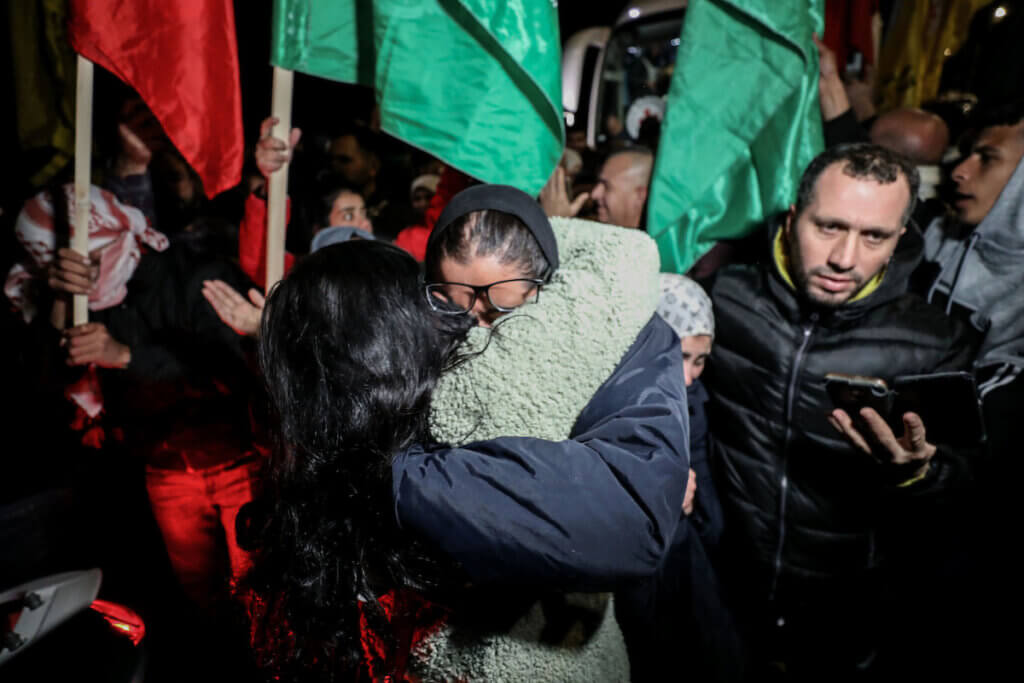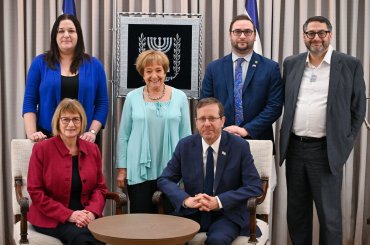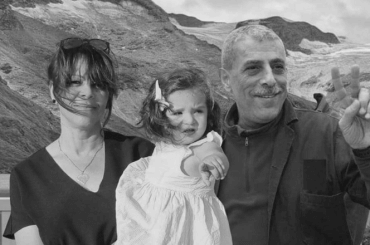On Sunday, November 25, hundreds of Palestinians gathered in front of the Al-Bireh Municipality, awaiting the arrival of Palestinian prisoners, predominantly women and children, as part of a prisoner’s exchange between the Palestinian resistance and Israel. As the hours passed, more young men and women joined the assembly. Vehicles obstructed the main road near one of the oldest mosques in Al-Bireh and Ramallah, the Al-Ein Mosque, which is distinguished by its slender, conical minaret — a tribute to its Ottoman heritage when central Palestine, especially Ramallah and Al-Bireh, were tranquil towns nestled in the hilltops of Jabal Al-Quds and where the space of the city was not interrupted by the slew of illegal settlements surrounding it, nor the verticality of large apartment complexes built as a result of the inability to expand horizontally.
A single Hezbollah flag was raised alongside a sea of Palestinian and Hamas flags, conspicuously breaking the longstanding absence of the flag since the Syrian Civil War. However, what stood more starkly was the absence of Palestinian official representation; not a single official from the current Palestinian Authority (PA) leadership was visible. Rumors circulated that they had been instructed not to attend these events, ostensibly due to concerns about Israeli piracy of Palestinian tax revenues.
Rumors have it that Palestinian officials were told by their Israeli counterparts to steer clear from such an outpour of pride for the release of Palestinian prisoners. Although rumors often interweave speculation with snippets of truth and may serve as instruments in the psychological warfare against the oppressed, the lack of an official Palestinian presence allowed many attendees to freely express their joy.
It was as if, for a moment, Palestinians could immerse themselves in the pain of loss and destruction in Gaza and the West Bank while simultaneously showing elation and pride for the release of women and children from Israeli prisons without the overshadowing presence of what some perceive as a Trojan horse that has become more cynical and authoritarian over recent years. Unburdened by the need to display deference or attribute unwarranted importance to any official, they were relieved of the constraints of formalities, a public gathering without the need to “play nice” or contain the screeching anger they held for the PA representatives.
In such rare moments of the absence of Palestinian officials, the binary world resumes its place without interruption, and for a moment, only colonizers and colonized remain. The complicated layers of society peel back to reveal a simpler truth — a return to the unclouded judgments of childhood, a time when speaking and being were one, and when the world was a place of stark contrasts not yet muddied by the gravity of public lies and the weight of Palestinian nationalism gone mad. For a moment, they no longer lived in a world that killed the nation in the name of the nation, or that put up the pretenses of a post-colonial world engulfed within a persistent colonial condition.
Child’s play
Nearly every Palestinian child knows the game “Army and Arabs,” a variant of hide-and-seek. In this game, children group themselves into two factions: those portraying Arabs and those acting as Israeli soldiers. A scuffle often breaks out before the game begins as they decide who will play each role. Many vie for the role of Palestinian protesters, eager to symbolize defiance and sacrifice for their cause. Meanwhile, others contend for the coveted role of an Israeli soldier, wielding the power to “kill” or “spare” in the context of the game, or to arrest or let go. The chasing between kids often breaks into laughs, and at times real fights break out when one of the kids takes the game too seriously and, for a moment, thinks him or herself a real soldier.
Much has been written about the interplay between childhood, truth, disobedience, and revolution. Children are marked by both absolute dependence on authority figures and unbridled curiosity, but they are also characterized by their frankness in pointing out truths, even when truth sits uncomfortably with shocked adults. Children often speak without concern for social decorum or the rites of passage into adulthood. This frankness hints at a departure from the “social glue” that binds adults together — often composed of the acceptance of lies and the learned understanding of hierarchies and authority, either cultural, social, or political.
Moreover, children’s games prepare Palestinian children to understand the binary nature of the colonial world they are born into, including the dynamics of power mirrored through their play. Shouts of “Allahu Akbar” are mingled with screams of joy as children run and forge new paths through neighbors’ gardens and hide underneath cars or behind doors and trees. In many ways, they echo the viral videos of the Palestinian resistance as the armored vehicle penetrates and attempts to hold space, while the Palestinian resistance covets angles, hideouts, and tunnels, searching for an opportune moment to hit the target.
The soldiers among them speak with broken Arabic mimicking Israeli soldiers at checkpoints, turning the phonic utterance of “ح” or “Ha” into a “خ” or “Kha,” in imitation of the dominant Ashkenazi Jewish Israeli accent and a performative embodiment of the figure of the Israeli soldier. Screaming at the child protestors with heavy accents, “Yalla” or “Ya Manyak,” children giggle with contempt at the butchering of the Arabic language, yet for some reason, they associate the inability of many Israelis to pronounce the “Ha” with a power they lack. The playing continues until it is suddenly ruptured with a funeral. During my childhood years, the enactment of the funeral would signal the end of play, and the children who performed the roles of Israeli soldiers would join the funeral and become once again Arabs shouting slogans of revolution and defiance.
The genealogy of the game, woven into the temporal fabric preceding the eruption of the first intifada, positions it not merely as a harbinger but almost as a spectral precursor to the great popular uprising in the late 1980s. In a dialectical turn, the narrative underwent a metamorphosis following the First Intifada: the erstwhile denouement, a scene of Arabs triumphing over soldiers and taking them prisoner, transfigured into a funereal tableau of the death of a Palestinian protest. Here, the playing ends not with conquest but with a public outpour of rage, inscribing a palimpsest of both victory and loss enacted by children as they shout the traditional slogans at funerals. It was as if children understood that now the Palestinians have to sacrifice rather than simply win — a precursor, also, to the other great intifada in the early 2000s, when Palestinians faced an intensified form of death and where funerals became even more commonplace. It signaled that victory might not be within reach, but preserving the capacity to resist is what would make the notion of victory possible.
Hidden transcripts and a hermeneutic battle
Nothing captures the profound anxiety of the Palestinian Authority in recent times more aptly than its contradictory stances and the stitching of an “alternative reality.” These range from public acknowledgments of political helplessness, illustrated by spokespersons openly weeping on camera, to the rampant spread of conspiracy theories within its ranks. It also culminates in a show of force under the Fatah banner, insisting on its wide presence in the Palestinian public space, or alternatively, by choking and killing the ability of crowds to gather in public spaces. This show of force often manifests in the deliberate infiltration of demonstrations, leading to violence and displays of muscular strength — a trinity of binding helplessness with illusions and muscles as it navigates growing internal revulsion from its security cooperation with Israel.
A notable conspiracy theory that has gained traction among affiliates of the PA alleges that the offensive by Palestinian resistance groups on October 7 was orchestrated through a secret agreement between Israel and the Palestinian resistance factions, specifically Hamas. This theory insinuates a plot to forcibly remove Palestinians from the Gaza Strip, essentially suggesting that the Palestinian resistance preemptively agreed to incite Israel’s military response and its extremely destructive policies. It suggests that resistance is implicated in Palestinian negation and collective annihilation.
The active engagement in constructing these conspiracies shifts the focus from the pursuit of truth to an “interpretive frame” that sustains a sense of belonging to the nation while simultaneously betraying it. This duality is a significant aspect of how conspiracy theories fester and are propagated, providing a refuge for the members of the Palestinian security apparatus. It weaves together a labyrinth where expressions of nationalism and the betrayal of nationalism exist side by side, conjoined in an unholy matrimony. Surprisingly, these forms of “truths” spread in the form of rumors. There is little investment in the creation of devoted blogs or in the persistent presentation of these fictions in an articulate form, as seen elsewhere in the deep dark web. Instead, their power lies in the fact that they emerge through willing ears and mouths, either out of a psycho-affective need for such illusions or to sustain the stability of an apparatus of power devoted to the killing of hope that resistance manages to conjure up.
The dynamics of these conspiracy theories breed hostility toward both Israel and internal Palestinian rivals, reflecting the PA’s portrayal of Israel as an invincible foe, distant and undefeatable. Paradoxically, it also intimates that any Palestinian resistance is constrained by clandestine accords with this very adversary. In this narrative, resistance to Israeli colonialism is depicted as a mere “pact,” with successful military operations or acts of defiance attributed to either fortuity or the machinations of a powerful, shadowy entity — this “Big Other” in the conspiracy theories is often portrayed as being closely connected to Israel itself with its status as an omnipresent power.
These modalities of hidden truths shield the PA from the shame of political inaction and of failing to heed the call of the Palestinian collective for a more active praxis by its leadership in the West Bank vis-à-vis the occupation. Illusions, conspiracies, and half-truths are a gateway fiction that sustains a “postcolonial” temporality absent a peace process and within the domain of a persistent colonial condition.
Given this backdrop, the proliferation of rumors and counter-rumors among the Palestinian people is unsurprising. For instance, rumors suggest that the PA eagerly disrupts all forms of public gatherings and face-to-face encounters among the general populace, especially those with political implications, and so, many believe that the PA has welcomed the partial or full closure of universities and their shift to remote education since the closure of universities would deprive Palestinians of a space to voice dissensus. It’s also whispered that the PA had a hand in Israel’s extensive arrest campaign, which silenced some of the most active political opposition voices in the West Bank, and also steered the high school system toward “remote education,” ostensibly because of closures and checkpoints, even though most students live near or close to their schools.
Rumors, after all, have no definitive author or formal scripter. Their spread is facilitated by the void of an authoritative narrative that engulfs Palestinian life and a lack of trust in the current system. These hidden transcripts accentuate the nature of the interpretive or hermeneutic battle occurring in the West Bank, a battle of conspiracy theories spread through rumors and meeting mostly deaf ears except by loyalists to the PA regime, and hidden interpretations of authoritarian power and its moves, policies, actions, and inactions — spread also by rumors and propagated by people searching for a horizon that transcends the PA. It is a larger war on how to interpret, react to, and participate in the war for Palestine that is being fought mostly in Gaza.
In fact, outside the self-defense zones of the northern West Bank, the battleground takes a different platitude. Here, war is waged not with weapons but with whispers, a clandestine conflict where rumors, conspiracies, and truths pass secretively from ear to ear. It is a war over truth, interpretation, and framing, launched by the government aiming to sustain the psycho-affective structure of its loyalists, and countered by a larger collective insistent on finding any semblance of hope. The PA is winning this war, not because it is convincing, but because of the sheer horror of mass killing in Gaza and the fear it has instilled in the West Bank. More importantly, it is due to the absence of a “voice” or organized social movement in the West Bank that can generate systematic opposition to the trinity of illusion, helplessness, and muscle.
‘Government and the People’
No one prepares Palestinians for their confrontation with those among them who assumed the role of Israeli soldiers, and who took this role seriously enough to proclaim their nationalism as a historical artifact to undermine liberation in the present. No one prepares them for the need to heed the system of governance that operates insistently on the premise of deconstructing the Palestinian collective ability to become child-like again — things like enunciating truths out in the open or celebrating disobedience with an infinite gaze of curiosity and a knack for questioning, all those things that make the stuff of resistance.
The release of another wave of prisoners on Monday, November 27, witnessed security agents of the PA, cloaked in the guise of civilians, inciting tension with chants of bravado threatening to vanquish Hamas: “Oh Men of Fatah, take a military posture, we will break the head of Hamas.” It was a perverse sort of irony, as prisoners freed by Palestinian resistance factions, including Hamas, were greeted with the scornful cries of PA loyalists pledging to break the very hands that unlocked their chains. It seems the PA found itself unable to tolerate any form of public Palestinian face-to-face encounters, opting to disrupt these direct interactions, forsaking formalities, and resorting instead to a raw demonstration of force in its fear of the power of unsupervised crowds without a reminder of their muscular presence.
Almost a week ago, as I was walking to my apartment complex, I found six running children, followed by three others holding sticks. The children holding sticks spoke clear Arabic, perfectly pronouncing the “ha” instead of imitating the Israeli “kha” and shouting a slogan that has become a staple in Palestinian political protests over the past decade against the PA: “Oh Sulta [PA], why? why? Some days it’s Israel’s military, the other days, it’s you.” I asked one of the children what they were playing, and he informed me it was a game called “Government and the People.”
The upsurge of children’s chants in my neighborhood pierced the cold chill of autumn, a harbinger carried by young voices bereft of illusions. Their play, a mimicry of the gravest realities, foretells the shape of things to come. Querying a child about the whereabouts of “the army” in their newly morphed games, his response was as chilling as it was casual: the army is behind the three with the sticks, and don’t worry, we are going after him too! The thought that haunted me at that moment was simple: “These damned children, toying with truth as though it were nothing but a game.”



Beautiful and sad writing.